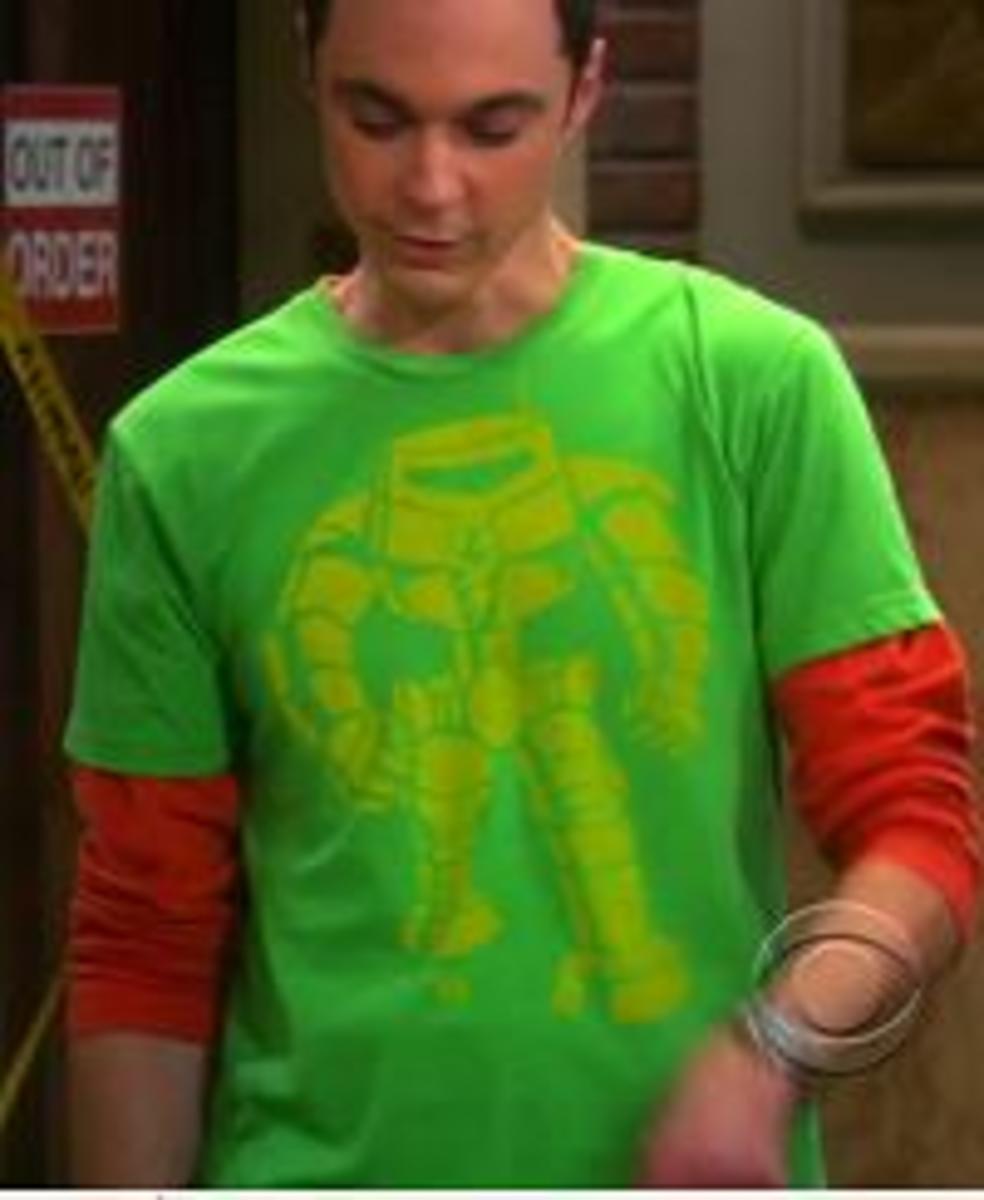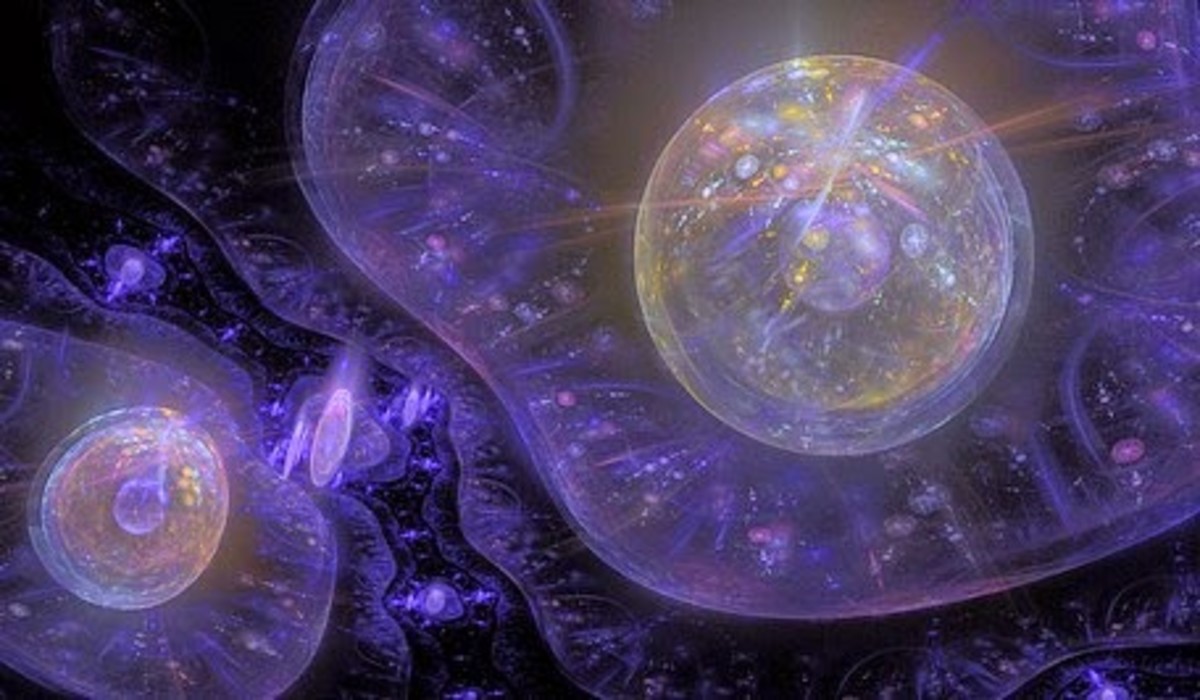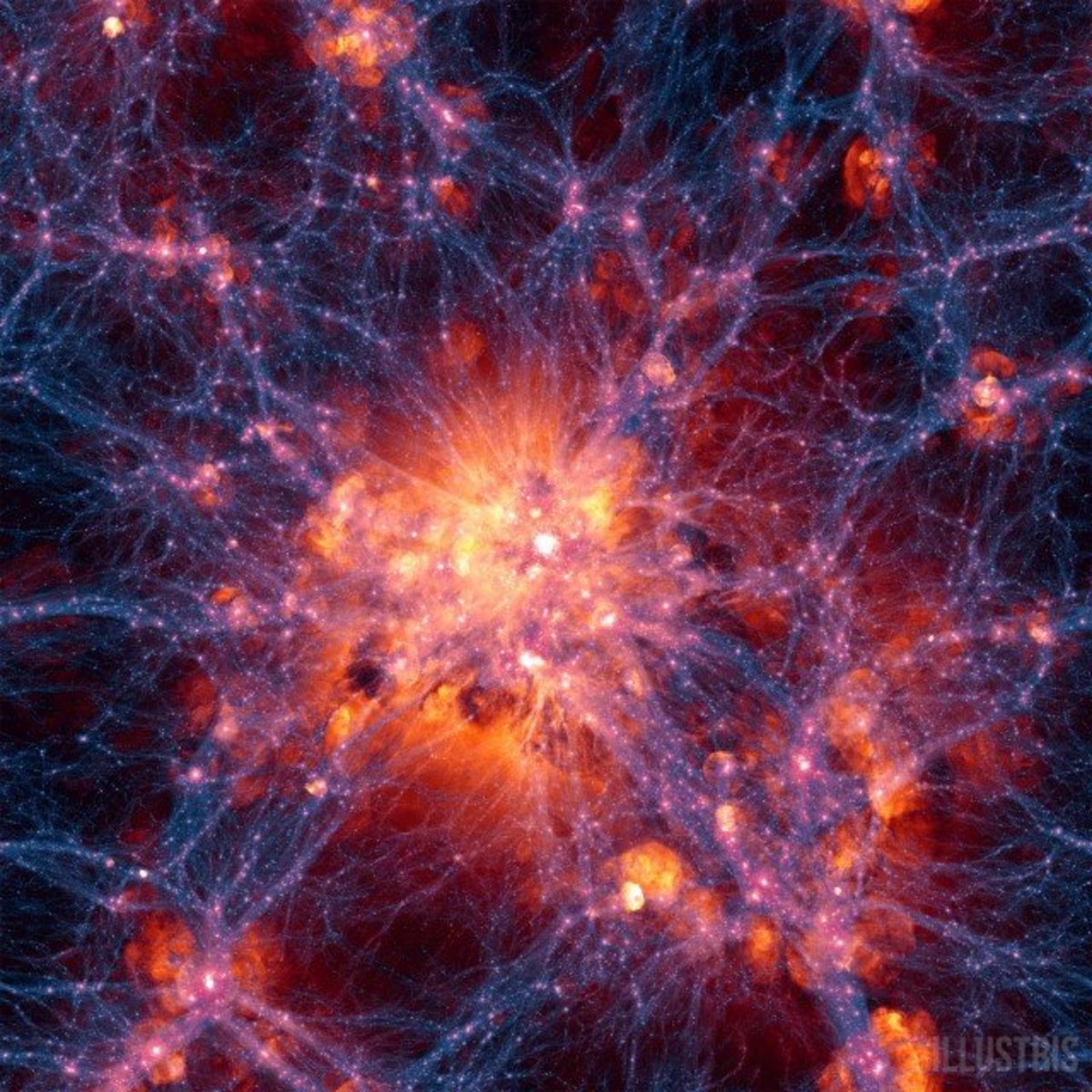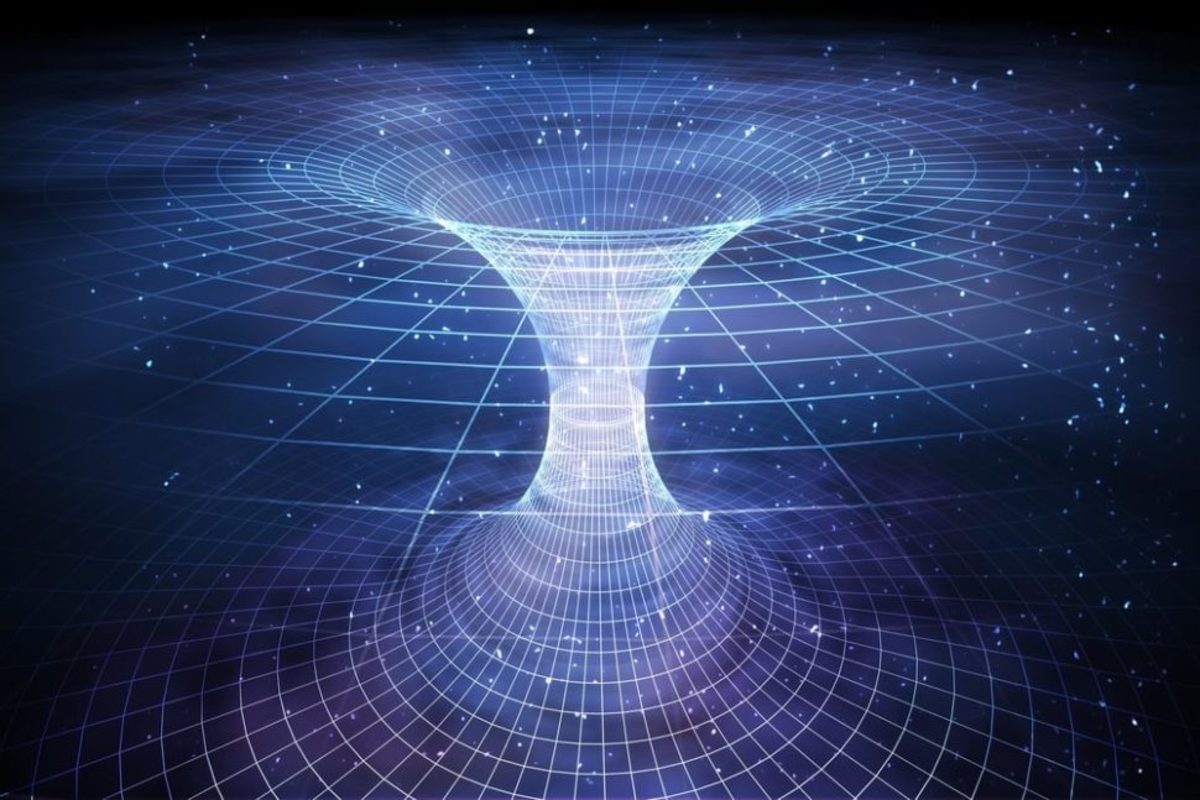Big Bang Theory, Origin of the Universe: What Is the Mystery?
The Big Bang spread debris that caused Small Bangs which contribute to expansion of the universe

Space exploration
The Big Bang involved fusion reaction in the origin of the universe that is expanding but a mystery remains
Big Bang
Already there is a lot of descriptions of Big Bang which is supposed to explain the origin of the universe.
What is the Big Bang? If it is a formula like E = mc2, then what is it?
To start with, it is my contention that although we have a lot of descriptions of Big Bang, no formal hypothesis or theory has been expounded yet. There might have been some attempts to come up with one. What is a theory?
A theory consists of concepts and relationship(s) between concepts, according to Einstein (Ideas and Opinions. 1954).
In E = mc2, the concepts are E (energy), m (mass), and c (speed of light). The relationships are equivalent, multiplied, and squared.
The steps to follow in constructing a theory should be: hypothesis, concepts and relationships that make up the hypothesis, proof of the hypothesis; the hypothesis proven true graduates into a theory.
Hypothesis
A hypothesis is a scientific guess based on strong foundations.
A hypothesis has the same elements as a theory. However, they differ in one aspect. A theory is true. A hypothesis is not yet proven true.
A scientist starts with a hypothesis then he, or others, proceed to prove it. When proven true, his hypothesis becomes a theory.
Sometimes these distinctions or stages are not followed strictly, or the language used is not that precise. More often than not, the term ‘theory’ is used to mean hypothesis and theory at the same time.
For example, the general theory of relativity. In its form when it was published in 1916, it was a hypothesis. It was couched in mathematical language that it was hard to understand it, much less to prove it. In its mathematical form, it was valid. Validity is the test of mathematics. But how do we know that it is true?
A statement of fact derived from the mathematical form must correspond to experience. That is, a statement of fact derived from the mathematical form corresponds to experience, according to Bertrand Russell, a mathematician, philosopher and Nobel Prize winner in Literature (Russell, B. Human Knowledge: Its Scope and Limits. 1947).
Einstein himself said:
“'It may well be true that this system of equations is reasonable from a logical standpoint. But this does not prove that it corresponds to nature.' You are right, dear skeptic. Experience alone can decide on truth.... ” (Einstein, A. 1950. On the Generalized Theory of Gravitation. Scientific American in Microsoft ® Encarta ® 2009).
Einstein drew statements of fact from the general theory of relativity that are close to experience opening ways for its verification. One of those statements is: “Light bends in the vicinity of a massive body like the sun.” The question was: is this true? Somebody verified it.
“The bending of the star’s light is detectable only with stars apparently near the Sun, and these stars can be seen only during a total eclipse” ((Levy, D. Cosmology 101. 2003:205). The total eclipse of the sun in May 29,1919 provided that rare opportunity. Two expeditions took photographs of the eclipse, one team in Sobral, Brazil and another at Principe Island off east Africa, lead by Eddington, who found that starlight was deflected by 1.75 seconds of arc. This verification of one statement of fact derived from the general hypothesis of relativity constitutes one proof to make it the general theory of relativity.
Seminal hypotheses
Let us scout around for what has been offered as hypothesis or theory.
“…The big bang theory proposes that the universe was once extremely compact, dense, and hot. Some original event, a cosmic explosion called the big bang, occurred about 13.7 billion years ago, and the universe has since been expanding and cooling” (Encarta encyclopedia 2009).
Here, some terms can qualify as concepts, like ‘compact,’ ‘dense,’ ‘hot.’ ‘Explosion’ can qualify as relationship. Even if ‘explosion’ fits the idea of a relationship, the above quote does not take the form of a theory.
“According to the big-bang model, the universe expanded rapidly from a highly compressed primordial state, which resulted in a significant decrease in density and temperature” (Encyclopedia Britannica 2009).
Here, ‘universe’ and ‘highly compressed primordial state’ can qualify as concepts. ‘Expanded’ can qualify as a relationship. The above quote cannot take the form of a theory.
“The big bang theory asserts that the observed expansion of the universe is the result of an explosive event which occurred at a definite time in the past” (Dennis, T.R. "The Big Bang Theory." Magill’s Survey of Science, Space Exploration Series, Frank N. Magill, ed., 1989:183).
The above quote does not take the form of a theory.
“If the Big bang model of cosmology is correct, in the very beginning of the time and space we know, all the matter and energy of Universe, as well as the space within which it would later expand, was contained as a single point…that single point could not have lasted more than a nanosecond, and the explosion that followed marked the birth of our Universe. It was not a point inside space, but an eruption that created space….”(Levy, D. “A Modern Cosmology.”. Cosmology 101. 2003:161).
The above quote from Levy contains terms like ‘matter,’ ‘energy’ and ‘single point’ that could qualify as concepts. ‘Explosion’ or its conjugation like ‘explode’ qualify as relationship. However, it is not clear which concept is involved in ‘explosion.’
The above quotes do not satisfy our criteria. In the first place, they were not intended as elaborations of Big Bang hypothesis or theory.
Big Bang formula
Let us posit a Big Bang hypothesis. It may consist of concepts and relationships (in bold face) contained in several formulas.
The point that exploded to become the universe was much larger than a dot like a period. Rather, it was a big ball.
Let us reconstruct that big ball, as it were.
Its diameter was three times the diameter of the sun. With this diameter any material in its center was condensed 1,000 to 10,000 than normal. This pressure, in addition to high temperature, was more than enough to support a spontaneous reaction like burning. The pressure in its center was more than three times that at the center of the sun.
Its center was over three times hotter than that of the center of the sun – 50,000,000,000 kelvin. The temperature at the center of the sun is 15,000,000,000 kelvin.
Its surface was not sealed; this big ball was not confined by, say, a magnetic field. It was easy to break it up with its debris spreading all over creating space.
In the beginning there were hydrogen atoms only at the center of the big ball. An ordinary hydrogen atom has one electron and one proton. It has no nucleus; it is the first element in the periodic table with atomic number 1. The electron is negatively charged; the proton is positively charged. At least two atoms of hydrogen were involved in the Big Bang. The proton of one atom repelled the proton of the other atom owing to Coulomb barrier. To make them join together there must be sufficient energy. The energy at the center of the big ball was more than enough to make the two protons of these two hydrogen atoms join together. The joining of such positively charged particles is called fusion. The formula of the fusion of these two protons is as follows:
H + H → D + β + + ν,
H indicates ordinary hydrogen with one proton. H + H is also the same as saying one proton plus one proton.
D means deuterium, an isotope of hydrogen. Isotope means “one of two or more species of atoms of a chemical element with the same atomic number and position in the periodic table and nearly identical chemical behaviour but with different atomic masses and physical properties” (Encyclopedia Britannica 2009). Hydrogen has the atomic number 1.
"For example, an atom with one proton and one neutron in the nucleus is an isotope of hydrogen called deuterium" (Swinerd, G. How Spacecraft Fly. 2008:118.
It is the number of neutron that makes for an isotope. One proton and two neutrons make another isotope of hydrogen called tritium. Deuterium is also called heavy hydrogen, indicated as 2H. The proton of deuterium is the one that reacts with the proton of ordinary hydrogen in the Big Bang.
β indicates a positron, a positively charged particle. Positron reacts with electron to produce gamma ray which is energy carried off.
v indicates a neutrino. It has no electric charge, with a small mass.
That arrow indicates “form,” meaning hydrogen plus hydrogen form deuterium plus positron plus neutrino.
Neutron. It has no electric charge; it is absent in ordinary hydrogen. It is found in the nucleus of heavy hydrogen together with proton in the isotope called deuterium.
Because hydrogen is abundant, the next reaction is as follows:
H + D → 3He + γ
Where 3He means helium-3.
The above reaction means, the proton of ordinary hydrogen and the proton of deuterium are joined together by energy. The combination forms heavy helium and gamma rays. The formation releases energy (explosion) much more than the energy used in joining the two protons.
Helium-3. There are six isotopes of helium. Two of them are stable, namely: helium-3 (3He) and helium-4 (4He).
It ranks second to ordinary hydrogen in terms of abundance. It is concentrated in the stars, including the sun.
γ indicates gamma rays that carries off some energy. Such energy being carried off may account for the missing mass of the universe and cooling off. According to American astronomer David Levy, about half the mass of the universe is missing.
The formula of the Big Bang is H + D → 3He + γ
“In the late 1930s Hans Bethe first recognized that the fusion of hydrogen nuclei to form deuterium is exoergic (i.e., there is a net release of energy) and, together with subsequent nuclear reactions, leads to the synthesis of helium. The formation of helium is the main source of energy emitted by normal stars, such as the Sun, where the burning-core plasma has a temperature of less than 15,000,000 K” (Encyclopedia Britannica 2009).
New entries as of March 29,2012
The energy released during fusion is 0.7% of the mass of proton and neutron.
"To be precise, the helium nucleus has a mass just 99.3% of the mass of its parts. When the protons and neutron fuse together to form a helium atom, 0.7% of their mass is converted to pure energy in a way described by Einstein's famous equation" (Swinerd, G. How Spacecraft Fly. 2008:119).
Swinerd might be in error here. It is the proton of ordinary hydrogen and the proton of deuterium that join together in the Big Bang, not the "protons and neutron." However, the mass of neutron since, in deuterium, the proton and neutron are close partners, the mass of the two are included in computing the overall mass of ordinary hydrogen and deuterium that make for the Big Bang.
How powerful is the Big Bang? Or what is the amount of energy generated during fusion? It is given by Einstein's equation E = mc2. So the formula must be E = 0.7% X (300,000)2 Suppose we use the earth as a measure of the amount of mass that had been converted by the sun to energy in the 4.5 billion years of the universe's existence, assuming that the Big Bang theory is true:
"...About 100 Earth masses have been converted into pure radiate energy!" (Swinerd, same source as above, page 120). End of new entries.
The Big Bang broke up the big ball whose particles spread all over. Ordinary hydrogen and helium-3 spread all over as well. Clouds of ordinary hydrogen became the seeds of Smaller Bangs that evolved into galaxies.
Helium-3 burns to give rise to helium-4 and ordinary hydrogen in a reaction as follows:
3He + 3He → 4He + 2(H)
Helum-3 and helum-4 are stable. The system tends to an equilibrium. At equilibrium, helium-3 reacts with itself and burns predominantly. The reaction rate of helium-3 with hydrogen is very small. Burning with deuterium is also negligible because the concentration of deuterium is very low.
Once helium-4 builds up, reactions with helium-3 can lead to the production of still-heavier elements, including beryllium-7, beryllium-8, lithium-7, and boron-8, if the temperature is greater than about 10,000,000 K” (Encyclopedia Britannica 2009).
Thus the production of heavier elements like beryllium, lithium, and boron. And the production of other elements found in the periodic table comes forth.
We extrapolate the Big Bang explosion from the sun that explodes 700 million tons of hydrogen per second to form helium. Our big ball exploded three times the power of the sun.
After the Big Bang, a trend toward equilibrium followed, along the the law of entropy.
Entropy
“Entropy is the irreversible tendency of the total energy in the universe to move toward equilibrium – the tendency of both heat and cold to trend toward a lukewarm norm, of available energy to become unavailable and inert” (Gilder, G. Microcosm.1989:181).
“All substances above absolute zero will have a positive entropy value that increases with temperature. When a hot body cools down, the thermal energy it loses passes to the surrounding air, which is at a lower temperature. As the entropy of the cooling body decreases, the entropy of the surrounding air increases.... ” (Encyclopedia Britannica 2009).
“The physical significance of k is that it provides a measure of the amount of energy (i.e., heat) corresponding to the random thermal motions of the molecules of a substance. For a classical system at equilibrium at temperature T, the average energy per degree of freedom is kT/2” (Encyclopedia Britannica 2009). k indicates Boltzmann's constant. Boltzmann pioneered entropy theory.
In layman’s term, a hot body will cool off until its temperature is the same as that of its environment. If you mix hot water with cold water, their temperature will equalize. The mixture will have a temperature higher than that of the cold water and lower than that of the hot water – where equilibrium is attained. Entropy occurs.
[David Levy is an American astronomer who, with Eugene and Carolyn Shoemaker, observed and made an account of the breakup of the Shoemaker-Levy 9 comet near Jupiter on March 25, 1993. The comet’s “shattered nucleus crashed into Jupiter over the period of July 16–22, 1994... the first collision between two solar system bodies ever observed….” (Encyclopedia Britannica 2009)].
Proof
We have adopted formulas not invented them. We have put them into a hypothesis consisting of conditions (concepts) and relationships. What is the proof that a hypothesis is true? A commonsense saying goes: a theory is true if it corresponds to experience. Experience verifies a hypothesis. A statement of fact can be drawn from a hypothesis such that that statement of fact is verifiable.
Sometimes ‘predict’ is used instead of ‘draw.’ For example: “From his general theory of relativity Einstein predicted that the universe is expanding.” I prefer ‘draw’ for it shows that something had been happening in the past up until now. Whereas ‘predict’ implies that something will happen in the future yet. It also has a tacit implication that the prediction will create what it predicts.
Some statements of fact can be drawn from “Hydrogen plus deuterium form helium plus gamma ray.”
One: The universe expands.
Verified. it was discovered by Edwin Hubble. Presently, it is verifiable. It was predicted by Einstein.
Such expansion must have started from the Big Bang.
Two: Cosmic microwave background radiation envelops the universe.
Verified. Cosmic microwave background radiation (CMBR) was discovered by Arno Penzias and Robert W. Wilson in 1965. One can verify it now. CMBR is the debris of the big bang explosion. There are "about 400 photons in every cubic centimetre of the universe" (Encyclopedia Britannica 2009).
Three: One-half of the mass of the universe has been missing.
Verified. One can verify it now. It is one of the findings in cosmological research (Levy. D. Cosmology 101. 2003).
This might be the first time that the third statement of fact is included for the Big Bang. The first two have been popular and accepted by NASA (National Aeronautics and Space Administration), for example.
(New entries as of October 20,2011).
Four: Debris of hydrogen gas became seeds of small bangs.
Verified. Also, the first time that this statement of fact is included in the Big Bang. Small bangs contribute to the expansion of the universe.
"The spectral lines of most of the distant quasar show evidence of vast clouds of hydrogen. Graphs of quasar spectra show forest of small 'Lyman-alpha lines' that denote the presence of hydrogen atoms in masses of cosmic clouds lying at various distances en route to the quasars" (Levy, D.H. Cosmology 101. 2003:164). This was first observed in 1971 by Roger Lynds in Kitt Peak National Observatory. This cloud could be 350,000 light years in diameter. It appears to be half a billion years old after the Big Bang. (End of new entries)
To recall the procedure that the general theory of relativity went through: (1) Einstein came up with a mathematical expression of his hypothesis, (2) Einstein drew statements of facts from the mathematical expression (for example, light bends in the vicinity of a large body; the universe is expanding), (3) Sir Arthur Eddington verified the bending of light, (4) Edwin Hubble discovered the red shift which shows that the universe is expanding. Eddington and Hubble, among others, provided proofs of Einstein’s general hypothesis of relativity. For having these proofs, Einstein’s hypothesis now graduated into theory.
In 1905, Einstein came up with his "special theory of relativity" as it is popularly called. At that stage it should have been called 'special hypothesis of relativity" in our nomenclature. It occupied one page of the publication, without any citation, according to Levy. It was regarded as a physical fiction. In its tail, Einstein issued in 1906 the formula E = mc2 as a statement of fact derived from the special hypothesis to make way for its verification. Enrico Fermi, an Italian-American, and his associates stumbled upon it in 1934 but could not properly interpret results. They bombarded uranium with slow neutrons; uranium split into two. Lise Meitner and Otto Frisch repeated Fermi's experiment in 1939 and verified Fermi's results. They gave the newly discovered reaction the name 'fission.' Fermi, Meitner and Frisch verified Einstein's E = mc2 (which is the basis of the atomic bomb dropped over Japan in 1945). Such verification turned the special hypothesis of relativity into special theory of relativity.
The special theory of relativity and the general theory of relativity deal with coordinating systems that we may call galaxies in layman's language. In the special theory, two galaxies are moving uniformly. The laws of nature in both are the same. In the general theory of relativity, two galaxies are moving relative to each other. The laws of nature in both are the same. In the general theory, Einstein tackled gravitation which was not considered in the special theory. Gravitation is a curvature of space-time.
We used statements of facts derived from a supposed Big Bang theory. Some might have thought that they constituted the Big Bang theory but they did not.
You may get back to descriptions of the Big Bang theory, like those we saw when scouting around for the formula of Big Bang, the origin of the universe.
Capsule Big Bang hypothesis
There was a big ball, three times the size of the sun. It contained ordinary hydrogen only in its center that was highly condensed with a temperature as high as 50,000,000 kelvin that support spontaneous explosion. The combination of hydrogen and deuterium produced the Big Bang that produced helium accompanied by the carrying off of energy in the form of gamma rays. The formula of the Big Bang is H + D → 3He + γ. After the explosion elements other than helium were formed, like beryllium, lithium and boron. The spread of gas and debris created space. Hydrogen gas served as seed for subsequent explosions that formed galaxies contributing to the expansion of the universe. The universe had been hot in the beginning; it has been cooling off. Half of its mass is missing. This is a brief description of a hypothesis of Big Bang.
The formulas of fusion had been verified and are occurring. The hydrogen bomb and tohamak, used to harness the energy of fusion for practical purposes (like nuclear power plants), has been virtual simulations of the conditions of a Big Bang. These are extrapolated as conditions that trigger spontaneous explosion. Statements of facts derived from the proposed hypothesis had been verified; in fact, they had been observed before any hypothesis had been expounded. If no contradiction is found in the formulas and conditions, concepts and relations, then this hypothesis is qualified to graduate into a Big Bang theory.
What could collapse the universe?
It has been found by cosmological research that half of the mass of the universe is missing. If the mass of the universe were intact, the universe would collapse into nothing (Levy. D. Cosmology 101. 2003).
What mystery?
The above discussions seem to have robbed the Big Bang theory of mystery. The concept of the big ball falls in the philosophy of pantheism, originated by Emmanuel Kant. With such natural conditions as big ball, unsealed boundary, hydrogen gas, pressure and temperature at the center, the Big Bang would most likely occur, one might say inevitably.The belief that there is a big design about the universe belongs in the philosophy of pantheism (where everything fits into something else). And there are several people who believe in it.
Einstein himself said that a scientist is a tamed metaphysician who constructs a large framework and lumps everything and all into it whether they fit or not. He admitted to being a pantheist and was glad, he said, that he could understand some of the laws of the universe. He still acknowledged mystery about the universe.
The question is: what is the origin of the big ball and the hydrogen gas? Who put them there? The religious will say: it was God. The atheist will ask: who made God?
That's the mystery!
Entries as of October 13,2009
Lost or we cannot catch up with it?
Is the missing mass of the universe lost? Or is it the case that we cannot catch up with it? It is more likely to be the latter case. If the Big Bang occurred some 13.7 billion years ago and we started to account for the mass some 50 years ago, we are missing a lot of the mass that had a head start. Our chaser is as fast as the speed of light that is chasing a mass that is traveling as fast as light. (Even if we used neutrino that is claimed to travel faster than light.) Therefore, our chaser will never catch up a mass that had a head start of billion years. We keep in mind that the universe has no boundary and is still expanding.
Entries as of October 27,2011
A supernova exploded 2,000 years ago. It was seen by Chinese astronomers in 185 A.D. The explosion stayed visible for eight months. (NASA 'Solves' 2,000-year Supernova Mystery. Yahoo News. October 25,2011).
This supernova is called RCW 86 whose remnant is "located about 8,000 light years away." It is one more verifier of statement of fact number four of our Big Bang hypothesis, to wit: "Debris of hydrogen gas became seeds of small bangs."
Small bangs contribute to the expansion of the universe.
The stellar explosion allowed "material expelled by the star to travel much faster and farther than it would have otherwise," according to the Yahoo News.
New entries as of October 28,2011
How old is the universe?
It depends on the kind of instrument used. Distance between celestial bodies is measured in lightyear (Levy, D. Cosmology 101.2003:17); a lightyear is the distance traveled by light in one year; or measured in parsec (3.3 lightyears). However, we extrapolate the explosion of the Big Bang from the redshift.
"Hubble explained that this redshift could be used to indicate the amount of recession; the more extreme the redshift the greater the velocity of recession. Astronomers measure the velocity of recession from the redshift" (same source as above, page 168).
But the redshift shows light that is slowing down, when entropy had already ensued. What happened before entropy? We can only account for the lightyears from the start of the redshift. However, there was an interval (from space-time of the general theory of relativity), a physical entity, between the Big Bang and entrophy.
Redshift doesn't apply?
Levy wrote:
"The most startling example of 'discordant redshifts' is in VV72, a chain of five galaxies of which one galaxy has a redshift that puts it more than twice as far as the rest. If the lone galaxy's redshift is due to the expansion of the Universe, then this galaxy is much farther away, and by incredible coincidence it just happens to fill a gap in the chain...." (Levy, D. Cosmology 101.2003:168).
This "discordant redshift" is accounted for by the fourth statement of fact of this hypothesis. From the debris of the Big Bang, seeds of hydrogen gas explode into small bangs (galaxies), each showing its own redshift. The redshift of one galaxy differs from that of another galaxy born separately. Their distance from Earth differ.
This concept of small bangs is contrary to what "...Hubble believed that the clusters of galaxies were distributed evenly throughout the Universe...." (same source as above, page 166).
The small bangs concept clarifies the doubt cast by Levy on Hubble's even distribution of galaxies as Levy wrote: "This is true only at the supercluster level, and recent discoveries of a Great Wall and a Great Attractor indicate, as we shall soon see, that it may not be entirely true even at that level" (same source as above).
Entries as of Jan. 12,2013
The latest in cosmological research is that the Higgs boson has been discovered. It looks like a negative charge that acquires mass in reacting with space. Still the question, who placed the charge?









